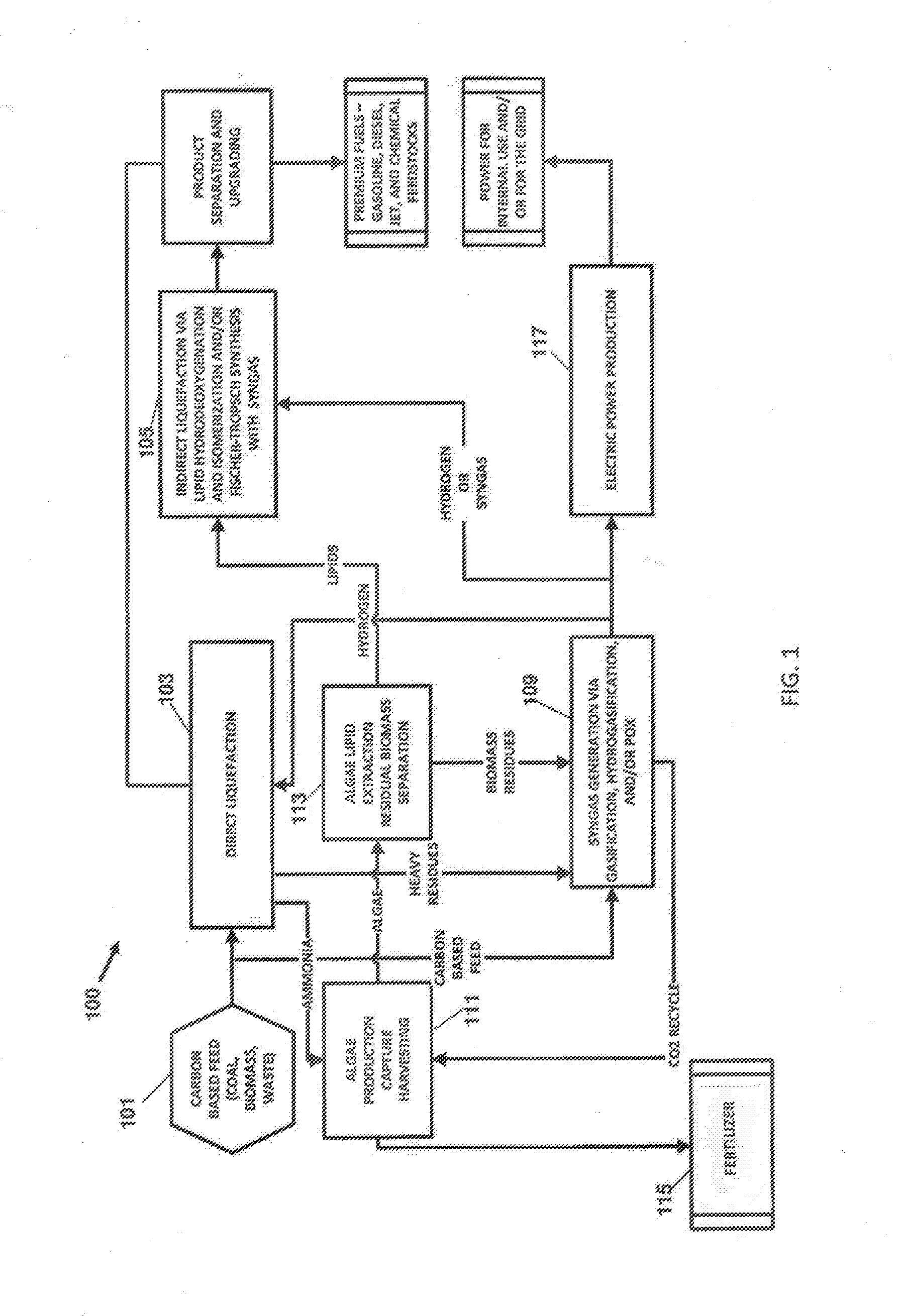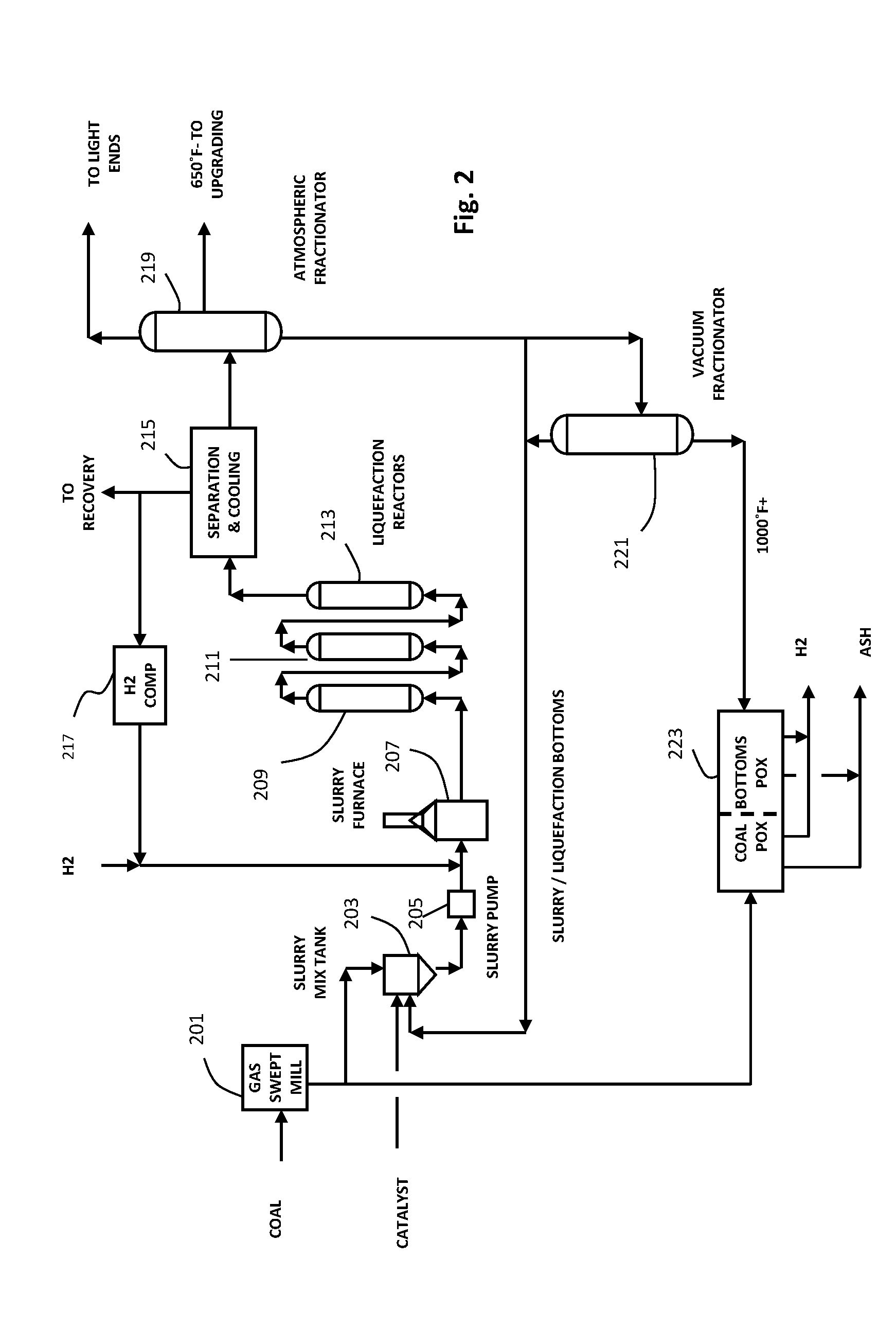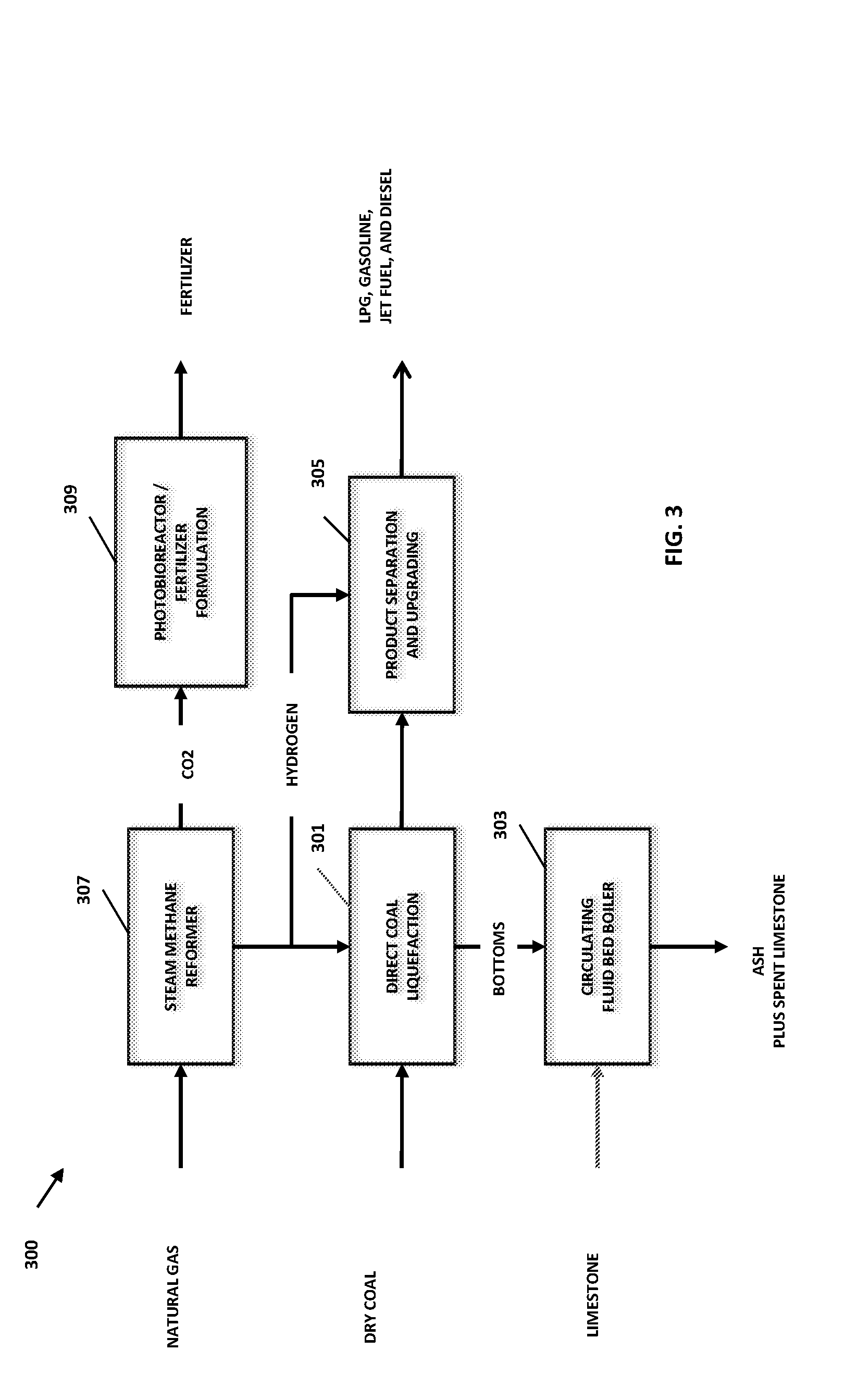Integrated Coal To Liquids Process With Co2 Mitigation Using Algal Biomass
a technology of biomass and integrated coal, which is applied in the direction of combustible gas production, sustainable manufacturing/processing, energy input, etc., can solve the problems of low thermal efficiency of indirect coal-to-liquid conversion methods, low co2 conversion efficiency of coal, and waste of coal and other solid fossil energy sources, so as to reduce or even eliminate the co2 footprint of the overall icbtl process , the effect of increasing the fertility of the soil
- Summary
- Abstract
- Description
- Claims
- Application Information
AI Technical Summary
Benefits of technology
Problems solved by technology
Method used
Image
Examples
Embodiment Construction
[0020]In accordance with a first embodiment of the ICBTL process and system of the invention, coal is converted by DCL to liquids, and biomass and / or additional coal is converted to liquids by indirect liquefaction by means of biomass hydrodeoxygenation, or by Fischer Tropsch conversion of syngas produced by the gasification of DCL heavy residues, biomass residues and / or coal or coal wastes. The liquids produced by the direct and indirect liquefaction steps are upgraded to produce premium fuels such as gasoline, diesel and jet fuel, and chemical feedstocks. Optionally, as an alternative, natural gas may be reacted by SMR, to produce the syngas for the indirect liquefaction process step. The gasification or SMR also produces additional hydrogen for the DCL, indirect liquefaction and upgrading steps.
[0021]Referring to the embodiment of the ICBTL system 100 of the invention illustrated in FIG. 1 of the drawings, carbon-based feed from source 101, which feed includes coal, and may also ...
PUM
| Property | Measurement | Unit |
|---|---|---|
| temperature | aaaaa | aaaaa |
| operating temperature | aaaaa | aaaaa |
| operating temperature | aaaaa | aaaaa |
Abstract
Description
Claims
Application Information
 Login to View More
Login to View More - R&D
- Intellectual Property
- Life Sciences
- Materials
- Tech Scout
- Unparalleled Data Quality
- Higher Quality Content
- 60% Fewer Hallucinations
Browse by: Latest US Patents, China's latest patents, Technical Efficacy Thesaurus, Application Domain, Technology Topic, Popular Technical Reports.
© 2025 PatSnap. All rights reserved.Legal|Privacy policy|Modern Slavery Act Transparency Statement|Sitemap|About US| Contact US: help@patsnap.com



